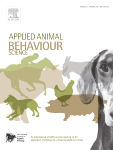Document type : scientific review published in Applied Animal Behaviour Science
Authors: Irene Camerlink, Winanda W. Ursinus
Summary: Animals' tail posture and motion play an important role in communication, amongst others. In domestic pigs, the debate around tail docking and tail biting has made the tail an important research topic, and tail-related behaviour is increasingly proposed as a welfare indicator. While the focus is mostly on tail biting, the broader meaning of the tail and the information it provides tends to be forgotten. The aim of this review is to give an overview of the current knowledge on tail postures and motions in pigs (Suidae) and to provide methodological recommendations for future research. The literature describes the various tail postures and tail motions of pigs during behaviours such as locomotion, feeding, and social interactions. Moreover, research has led to an increased understanding of how tail postures and motions relate to the animal's experiences and emotions. Overall, the tail can provide useful information about the pig's physical and emotional experience at that moment. We propose a detailed ethogram including both tail postures and tail motions and give recommendations for observation methods. In order to guide further research, we allocated the tail postures to the four quadrants of the circumplex model of affect, which describes emotional state on a valence and arousal axes. Although exceptions occur in each quadrant (i.e. valence-arousal combination), in general, a curled tail (in domestic pigs) can be allocated to the quadrant of positive valence and high arousal, whereas a relaxed hanging but loosely wagging tail can be allocated to the quadrant of positive valence and low arousal. The tucked motionless tail can be allocated in the quadrant of negative valence and low arousal when (semi-) chronically tucked; and in the quadrant of negative valence and high arousal when it is a sudden response to a potential threat. Given the many different situations in which the tail is hanging, caution is needed when interpreting this posture. In conclusion, there is a substantial body of literature on tail postures and motions which may aid in interpreting pig tails correctly in terms of the animal's experience.




